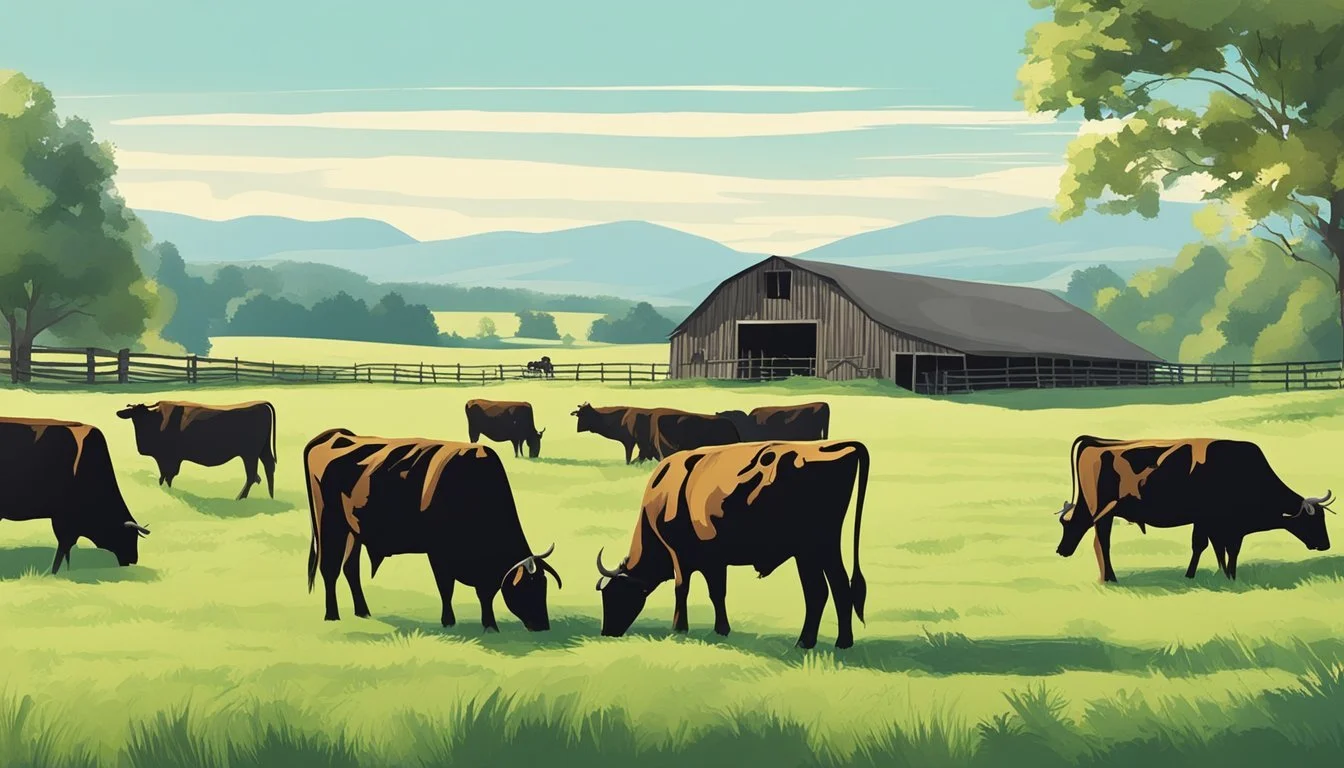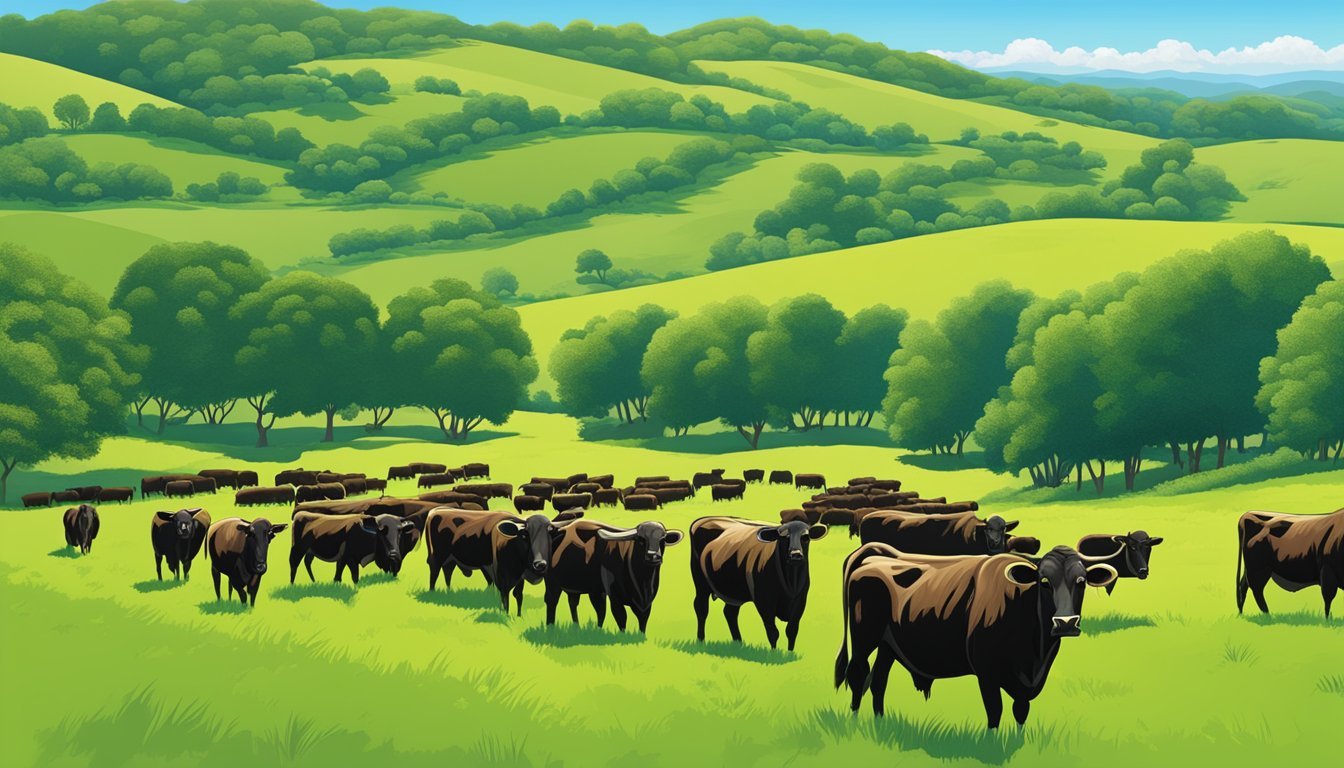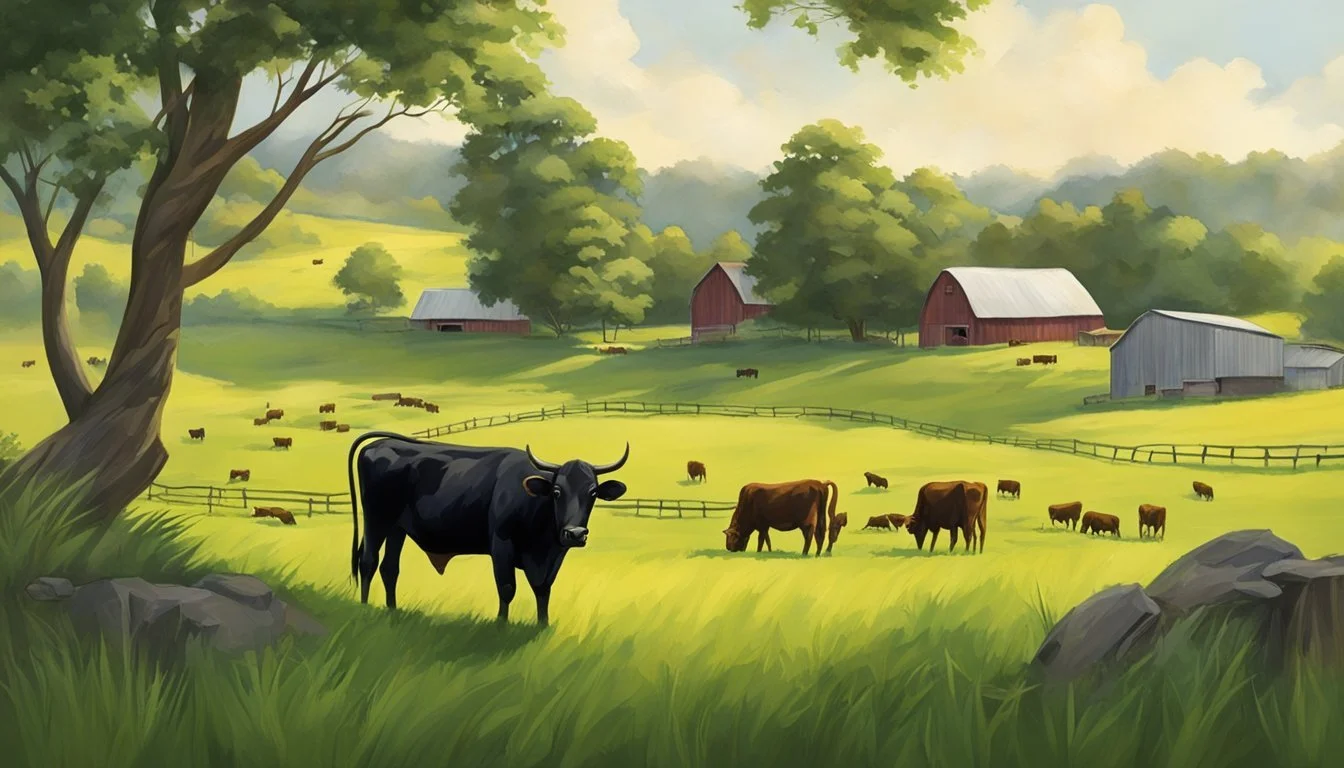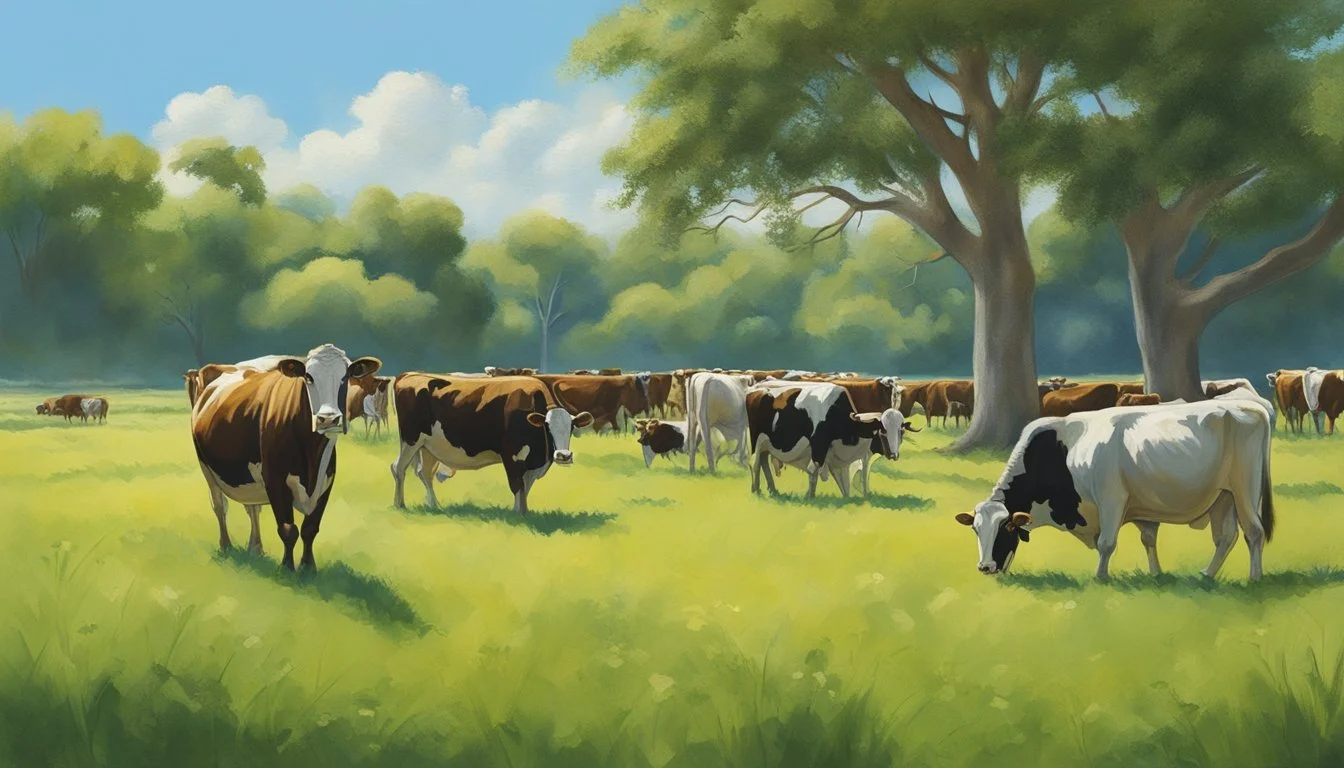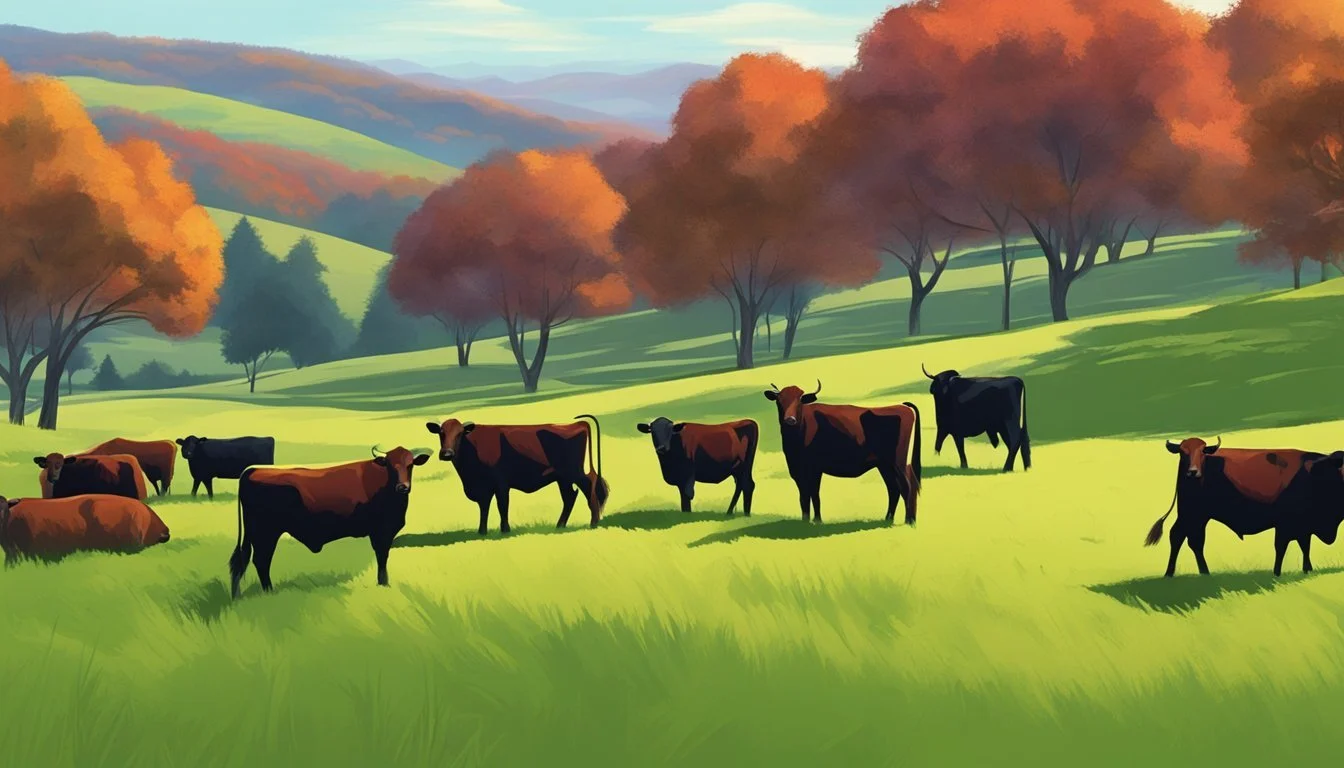Dexter Cattle for Raw Milk Production
Navigating Legalities and Exploring Health Advantages
Dexter cattle, a small, dual-purpose breed known for their hardiness and adaptability, have gained popularity for small-scale farming operations. Their size and temperament make them ideal for providing raw milk, a product that has seen a resurgence in demand due to its perceived health benefits. Raw milk from Dexter cattle contains a rich array of enzymes, vitamins, and beneficial bacteria often attributed to aiding digestion and boosting the immune system.
As the market for raw milk expands, it is critical for producers and consumers to understand the legal framework that governs its distribution. In the United States, the sale of raw milk is heavily regulated and varies significantly from state to state, with some permitting its sale directly to consumers and others imposing strict prohibitions.
It is imperative for those interested in engaging with Dexter cattle as a source of raw milk to navigate these regulations carefully. Compliance with legal standards ensures the safety of consumers and the viability of the raw milk market. Additionally, it protects farmers from potential legal issues that could arise from the sale of unpasteurized milk products.
Dexter Cattle Origins and Characteristics
Dexter cattle hold a distinctive position in the world of bovines, renowned for their versatility, hardiness, and efficiency in milk production. Originating from Ireland, these cattle have adapted to a variety of environments and serve as a dual-purpose breed.
Historical Background
Dexter cattle trace their roots back to the early 1800s in Ireland, specifically the rugged terrain of County Kerry and County Tipperary. They emerged as the stock of choice for small landholders who required hardy and thrifty cattle that could provide both milk and meat in limited spaces. Dexters have a unique place among cattle breeds, often associated with the area around Dexter's Ferry in Cork's south coast, which hints at the breed's native home and nomenclature.
Breed Characteristics
Dexter cattle are distinguished by their:
Small size: Standing shorter than many standard breeds, they are easier to handle and require less pasture.
Colors: Exhibiting a range of three colors—black, red, and dun.
Polled/Horned: Some Dexters are naturally polled (without horns), while others are horned.
Chondrodysplasia: This breed can display a condition known as chondrodysplasia, or dwarfism, which should be carefully managed within breeding programs.
Boasting a docile temperament, these cattle are suited for various farm environments. Their small size does not hinder their productivity; rather, it enhances their thrifty nature in terms of feed efficiency. The characteristic hardiness of Dexter cattle ensures they can withstand diverse climatic conditions, maintaining a high level of versatility, whether for draft work, beef, or milk.
Legal Aspects of Raw Milk from Dexters
In the United States, the legal framework surrounding the sale of raw milk, including that from Dexter cattle, is complex and varies by state. This section examines the specific regulations and guidelines that affect raw milk from Dexters, as well as the standards set forth by the American Dexter Cattle Association (ADCA).
Regulations and Guidelines
Federal Overview: At the federal level, the sale of raw milk for human consumption across state lines is prohibited. However, states have the autonomy to regulate raw milk sales within their borders. As a result, the legality of raw milk sales, including Dexter cattle raw milk, ranges from fully legal to entirely banned, depending on the state.
State-Specific Laws:
States where raw milk is legal to varying extents:
Retail Sales Permitted: Some states allow raw milk sales in retail outlets, under strict regulation to ensure consumer safety.
Farm Sales or Herdshare Programs: In other states, consumers can acquire raw milk directly from farms or through participation in herdshare programs where they own a part of a cow, such as a Dexter, and receive a portion of the milk produced.
Compliance with Local Regulations: Farmers must adhere to a myriad of local regulations which can include:
Health department permits
Regular testing for contaminants
Adherence to sanitary standards
Labeling Requirements: Raw milk containers are often required to carry clear labels warning of potential health risks to inform consumers.
American Dexter Cattle Association Standards
ADCA Role: The ADCA plays a significant role in promoting the standards and quality of Dexter cattle, including those used for raw milk production. However, it does not directly regulate milk sales.
Guidelines for Dexter Milk Production: The association provides best practices for the breeding and management of Dexter cattle:
Maintaining the genetic purity and health of the breed
Implementing proper care and nutritional guidelines to ensure the production of high-quality milk
Educational Resources: The ADCA also offers resources to Dexter cattle owners on how to comply with local regulations regarding raw milk production and sales. These resources foster responsible management practices among members and non-members alike.
In summary, while the ADCA supports Dexter cattle owners by providing resources and guidelines, the sale and distribution of raw milk from Dexters are subject to a complex web of local and state regulations in America.
Health and Nutritional Profile of Dexter Milk
Dexter cattle produce milk with a distinctive nutritional profile, characterized by its rich flavor and high butterfat content. The milk offers a unique combination of benefits, suitable for small-scale dairy operations and personal consumption.
Milk Production
Dexter cows yield an average of 1.5 to 2.5 gallons of milk per day, with variances attributed to factors such as the cow's age, health, and diet. Their daily production is modest compared to larger dairy breeds, yet it is ample for family use or small-scale farming needs. The milk produced by Dexter cattle is noted for its rich flavor and creamy texture.
Butterfat Content and Quality
The milk from Dexter cattle is prized for its high butterfat content, typically ranging from 4% to 5%. This elevated butterfat level contributes to the milk's rich flavor and creamy consistency, making it well-suited for butter and cheese production. The quality of Dexter milk is often compared favorably to that of other dual-purpose breeds and even some pure dairy breeds.
Breeding and Reproduction
In breeding Dexter cattle, the focus is on facilitating a smooth calving process and maintaining high fertility rates. This takes into account their dual-purpose nature as milk and beef providers. Breeding practices and reproductive health are central to the vitality and productivity of the Dexter breed.
Calving Process
The Dexter breed tends to have a manageable calving process, with cows known for their calving ease due in part to the breed's small frame. Nevertheless, breeders should closely monitor the mothers around the expected calving window, which is typically around 283 days. While the gestation period may vary slightly, calves often arrive within ten days of the due date. Calving difficulties are relatively rare, but quick intervention is necessary if complications arise.
Fertility and Offspring
Dexter cattle generally exhibit good fertility rates. The breed is appreciated for its ability to produce viable offspring consistently. It's noted that Dexter bull calves may have a slightly longer gestation period than heifer calves. Monitoring udder health is also essential, as the mothers need to be in good condition to nurse their offspring and for the continuation of milk production post-calving. Breeders will often assess fertility and offspring health as critical indicators of the herd's overall well-being and potential.
Raising Dexter Cattle
Dexter cattle are well-suited for small farms and ranches, valued for their ease of handling and modest space requirements. They can provide both meat and milk and thrive on pasture-based systems due to their efficient foraging abilities.
Feeding and Foraging
Dexter cattle are ruminants that require a balanced diet to maintain health and productivity. Their feeding regimen includes:
Pasture: A variety of grasses and legumes should be available for foraging. Dexter cattle are proficient at turning forage into quality milk and meat.
Supplementary Feed: During leaner months, they may need hay or silage to supplement their diet. Grain supplements can enhance milk production or growth rates, but it's important to avoid overfeeding.
Space and Handling
Dexter cattle are smaller than many beef breeds, which impacts their space and handling requirements:
Space: They typically require less pasture land per animal compared to larger cattle breeds, making them a good choice for small acreage ranches.
Ease of Handling: Their manageable size and generally calm demeanor make handling and day-to-day management tasks easier for farmers, including tasks such as milking and veterinary care.
Dexter Cattle Uses
Dexter cattle are a versatile small breed, well-regarded for their quality meat and dairy production. Often considered a dual-purpose breed, they offer a sustainable option for both meat and milk, with some even serving as draft animals.
Meat Production
Dexter cattle are valued for their beef which is known for its tender texture and excellent marbling, contributing to the superior meat quality. As a small breed, their carcasses are relatively petite, making them a popular choice for small-scale farming and direct marketing programs. The breed is highly appreciated for yielding a manageable quantity of beef that fits well within modern family consumption patterns.
Beef Quality: Tender, flavorful, with good marbling.
Carcass Size: Smaller than average, suitable for niche markets.
Dairy and Draft Potential
Dexter cattle also excel as a dual-purpose breed for dairy production. They can produce high-quality milk with a higher butterfat content, ideal for making dairy products like cheese and butter. Additionally, this tri-purpose breed has a history of use as oxen or draft animals. While less common today, Dexters can still be trained as working animals on small farms, providing an eco-friendly alternative to machinery.
Milk Production: Approximately 1½-2½ gallons per day with 4%-5% butterfat.
Draft Use: Suitable for small-scale, eco-conscious farming.
Benefits for Small-Scale Farming
Dexter cattle present substantial benefits for small-scale farming, particularly appealing to homesteaders for their multipurpose capabilities and environmental adaptability.
Homesteaders' Choice
For those managing small farms or homesteads, Dexter cattle are an efficient and productive breed. They are compact, require less land, and are less expensive to feed compared to larger breeds. Homesteaders often find Dexters ideal due to their dual-purpose nature, providing quality beef and rich milk. These small-scale benefits include:
Size: Their diminutive stature makes them easier to handle and less intimidating, especially for hobby farmers or those new to cattle rearing.
Efficiency: Dexter cows can convert feed into milk and meat more effectively than some larger breeds.
Environmental Adaptability
Dexters are highly adaptable to a wide range of climates, which contributes to their popularity among small-scale farming initiatives. Here are specific ways Dexter cattle show their adaptability:
Climate Tolerance: They thrive in both hot and cold environments, exhibiting hardiness that ensures sustained productivity year-round.
Grazing Versatility: Dexter cattle can prosper on pasture-based diets, which can be both cost-effective and environmentally sustainable for small farms.
With these characteristics, it's clear why Dexter cattle make a strong case for their inclusion on small farms looking for versatile and efficient livestock options.
Health and Longevity of Dexters
Dexter cattle are recognized for their resilience and longevity, traits that contribute to their suitability for raw milk production. These aspects are rooted in their robust disease resistance and relatively low-maintenance needs.
Disease Resistance
Dexter cattle typically display strong disease resistance, an attribute that stems from their hardy conformation. Their adaptability to various climates plays a critical role in this resilience, allowing them to thrive in diverse environmental conditions with fewer health issues. Routine vaccinations are integral to disease prevention, ensuring that Dexters maintain their productivity and robustness.
Lifespan and Maintenance
Dexter cattle boast an impressive lifespan, often attributed to their breed's ability to avoid injury and disease. They are generally considered low-maintenance livestock, demanding less in terms of healthcare compared to larger breeds. Their longevity not only signifies a long productive phase but also translates into economic benefits for those managing a herd for raw milk production.
Dexter Cattle and Dairy Farming
Dexter cattle are a versatile breed that excel in the production of high-quality milk, with the added advantage of their small size making them well-suited for micro dairy farming. They can yield up to 3 gallons of milk per day and thrive on a grass-fed diet.
Micro Dairy Farming
Dexter cattle are particularly advantageous for micro dairy farming due to their small stature. Their size makes them easier to manage and requires less space than larger dairy breeds, which is ideal for small-scale operations. Dexter cows can produce 2-3 gallons of milk daily, making them relatively prolific milk producers for their size. Their milk is rich in quality, often with a higher butterfat content, which is desired for making butter and cheese. As these cattle are known to perform well on a grass-fed diet, they often can be considered for more sustainable dairy practices.
Raw Milk Advocacy
Raw milk advocates often highlight the health benefits of unprocessed milk, which includes a variety of vitamins, minerals, enzymes, and beneficial bacteria. Dexter cattle's milk is particularly noted for these qualities due to the cows' ability to produce milk high in nutritional value. However, the sale of raw milk is subject to legal restrictions, which vary widely by region and state. Farmers opting to sell Dexter cattle milk must navigate these laws, which often stem from concerns over potential pathogens. It is crucial that those managing Dexter cows for raw milk production adhere strictly to sanitary practices to maintain milk safety and quality.
Cultural and Social Aspects
Dexter cattle are deeply valued within the farming community for their dual-purpose utility and the sense of tradition they carry, often fostering a unique social and cultural environment.
Breed Associations
The American Dexter Cattle Association and the Dexter Cattle Society in the UK play pivotal roles in maintaining breed standards and in preserving this cattle breed which is considered a rare breed. They facilitate registries, provide educational resources, and organize events that promote the Dexter cattle breed. These associations are essential for breeders who seek to sustain the breed's reputation for quality raw milk and meat production, ensuring that traditions and best practices are passed down through generations.
Hobby Farming Community
In the hobby farming community, Dexter cattle are a favored choice due to their manageable size and gentle nature. They are often the preferred breed for small-scale farms that value sustainable living and personal connections with their livestock. Hobby farmers may be particularly interested in the breed's efficiency in producing high-quality raw milk. The connection between farmers and their Dexter cattle is not only utilitarian but also a deeply social interaction, where raising and caring for the animals provide both a sense of community and personal fulfillment.
Physical Characteristics and Conformation
Dexter cattle are recognized for their versatility and unique conformation, which contribute to their growing popularity as a source of raw milk. These cattle possess a compact body structure that reflects their dual-purpose heritage, which is optimized for both dairy and beef production.
Color Variations and Standards
Solid Colors: Dexter cattle exhibit predominantly solid colors that include black, red, and dun. These solid colors are a standard expectation for the breed, signifying a purebred status.
Black: The most common color, presenting a rich, deep shade.
Red: A reddish-brown hue that varies from light to dark.
Dun: A tan color that can range from a pale shade to a more pronounced brown tone.
White Markings: While white markings are permitted on Dexter cattle, they are generally limited to specific areas such as the udder, behind the navel, on the penis sheath, and under the tail.
Excessive White: Excessive white or large white patches outside of the typical markings are considered undesirable as they deviate from the breed's standards.
Body Structure
Stature: Dexter cattle are the smallest European cattle breed, which allows them to be efficient grazers in various environments. Bulls and cows usually stand at 38-48 inches tall at the shoulder, contributing to their distinction as a miniature breed.
Chest Width and Hindquarters: A well-rounded barrel chest is expected in Dexters, providing ample lung space. Their well-rounded hindquarters are another breed characteristic, indicative of their muscling and strength.
Bulls: Exhibit a broad, muscular frame.
Cows: Display capacity for both beef and dairy production, with well-developed udders.
Horns and Dehorning: Horns are a natural feature of Dexter cattle; however, some owners may choose to dehorn to prevent injuries within the herd or for easier management. This practice should be carried out with consideration for animal welfare.
Conformation: Dexter cattle conformation should reflect a balance between form and function. A good conformation is important for longevity and productive life, demonstrating the breed's dual-purpose utility without veering towards extremes.
Conservation and Rare Breed Status
Dexter cattle hold a distinctive position as both a functional livestock option and a focus of conservation efforts due to their status as a rare breed with historical significance.
Preservation Efforts
The Dexter Cattle Society, along with other conservation groups, recognizes Dexter cattle as a valuable genetic resource. They trace their lineage back to the 18th century in southwestern Ireland, originally associated with Kerry cattle but recognized as a distinct breed by the late 1800s. Due to their hardiness and adaptability, Dexter cattle have become integral to rewilding projects and conservation grazing, helping to manage and maintain diverse ecosystems.
Efforts to preserve the breed have included the establishment and the restructuring of societies dedicated to their promulgation. The American Kerry and Dexter Club, reestablished in the 1940s, later evolved into the American Dexter Cattle Association. This reflects ongoing commitments to keeping the breed viable and maintaining its genetic purity away from its Irish origins.
Global Popularity
Although Dexter cattle are not as widespread as commercial breeds like Jersey cows, their global popularity has been increasing. They are particularly valued for their smaller size, efficient feed conversion, and the high-quality raw milk they produce. In several countries, owners prize Dexters for their dual-purpose utility—providing both milk and meat.
International initiatives have led to renewed interest and importation of Dexters across the globe, from Europe to North America, with many small-scale farms adopting these cattle for their comparatively low impact on land and suitable attributes for sustainable farming practices. These factors collectively contribute to a gradual but significant elevation in the Dexter's status from a rare to a more recognized breed among smallholders and conservationists.

